Lausanne votes on north-south urban revamp
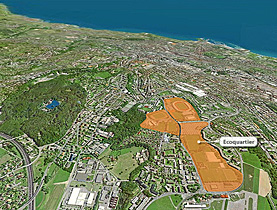
Lausanne residents are voting on Sunday on the future of a huge urban development project that could transform their city.
Métamorphose is one of a number of recent high-profile development projects in Lausanne – a city with a population of 250,000 that is expected to welcome another 100,000 inhabitants by 2020.
So as not to lose out to other regions, the city on Lake Geneva is being forced to reinvent itself; the authorities have agreed to house half of the new arrivals and create 30,000 new jobs.
Métamorphose aims to partly meet this demand via the construction of eco-housing, a park and local amenities for 6,000 residents, as well as an athletics stadium and other sporting facilities in the north of the city between the Pontaise and Blécherette districts. They will all be linked to the centre of Lausanne via a new tram line.
In the southwest, near Lausanne University and the lake, there are also plans for a new 13,000-seater football stadium, an Olympic-size swimming pool, housing and parking.
The SFr1.5 billion ($1.45 billion) project will be financed through private-public partnerships costing the city SFr200 million, and work could start as early as 2012. The city authorities agreed the overall blueprint in 2007.
Nostalgic opponents
But a group of residents from the northern Pontaise district, heritage campaigners and several architects have another vision of the city and have forced a local vote.
While recognising the urgent need for housing, they want to keep all sports facilities in the north of the city and save the historic Pontaise Olympic Stadium, which was built for the 1954 World Cup in Switzerland and risks demolition.
They say the stadium is part of the local identity and should form part of a smaller eco-housing development in the north that is not just for the well-to-do.
“Métamorphose is a long-term urban project that has been done a bit hastily,” said architect Blaise Sahy. “It’s a fantastic project but it could be improved. I’m convinced that to build new districts they need to be integrated with what exists and the people who live there. This is the new way of building a city, rather than demolishing and de-localising.”
“The real challenge of sustainable cities today is the renewal of the existing city.”
Domino logic
Olivier Français, local councillor in charge of Lausanne’s infrastructure, said it was cheaper to build a new stadium than to renovate the Pontaise.
“The concrete needs maintaining and we need to cover each end to welcome spectators,” he explained.
A cross-party political alliance defending Métamorphose says the people’s initiative text is incoherent and a vote in favour of the symbolic stadium could endanger the entire project, especially over access to private and federal funds.
A rejection of Métamorphose would also be a huge slap in the face for many local politicians from the Olympic Capital, who have staked their name on it during the current term of office.
“It would be very annoying, as it would break the dynamic and things would have to start again at zero. There is a domino logic behind Métamorphose,” explained Francesco della Casa, editor of the urban development magazine Tracés.
“There is quite an intelligent opportunity for the location of the stadium and the swimming pool, which frees up land for a new housing district, and allows a new transport line in the north. It’s an interesting, pragmatic vision, but its weakness is that each point has to be accepted to maintain its coherence.”
Ambitious visions
Métamorphose is one of a number of new high-profile urban projects in Lausanne.
The SFr740-million M2 driverless north-south underground railway – Switzerland’s first metro which opened in October 2008 – is soon to be overtaken by the M3, a tram linking the centre of the city with Renens and Bussigny in the west. This will be followed by a link up to Blécherette and the new eco-district in the north.
In parallel, new trolleybus lines will be created to further improve east-west public transport.
Apart from the Métamorphose project, additional housing is planned across the city, including major building work on land west of the city as part of a Lausanne-Morges urban project.
Elsewhere, the Beaulieu conference centre and Lausanne’s opera are due to be renovated and extended, and a new Vaud arts museum may well end up in Lausanne. Work is also continuing on the futuristic Learning Centre library and study area, as part of extensive campus development at Lausanne’s Federal Institute of Technology.
Simon Bradley, swissinfo.ch
In the north between Pontaise and Blécherette districts: eco-housing district for 6,000 new residents, shops, schools, nurseries, park, a new sports complex comprising ten football pitches, athletics stadium for 13,000 spectators, sports centre, ice rink, tennis courts and other sports facilities, parking for 600 cars, and a new tram between Flon in the centre of Lausanne and Blécherette. Demolition of the Pontaise Olympic Stadium.
In the southwest, close to Lausanne University and the lake: new 13,000-seater football stadium, Olympic swimming pool, French bowling area, parking for 1,200 cars, housing for up to 1,800 people, offices and leisure facilities.
The basic outline for the SFr1.5-billion public-private project was approved by the Lausanne city authorities in November 2007.
The Ceva train link between Geneva’s Cornavin train station, Eaux Vives and the French town of Annemasse, designed to improve regional transport, is being blocked by around 60 public appeals – down from 1,600.
The La Praille-Acacias-Vernets urban development project – 14,000 new homes and 15,000 new jobs – is being blocked by opponents who fear new offices are being proposed by property developers. The Geneva population will vote on this project and the Ceva link on November 29.
According to Francesco della Casa, editor of the architectural magazine “Tracés”, Lausanne is enjoying a dynamic period, while Geneva is blocked by suspicions between tenants and property developers, which are exploited by a handful of politicians and organisations.
For Olivier Français, local councillor in charge of Lausanne’s infrastructure, this dynamism is down to Vaud’s communes, which have “greater executive powers” and a “policy of proximity” for urban development issues.
But Yann Gerdil-Margueron, producer of “Urbanités”, an urban development show on French national radio, says despite the above-mentioned blockages, Geneva is “on the right track” and has experienced an “unprecedented urban explosion” over the past eight years, with the creation of new districts and transport plans.

In compliance with the JTI standards
More: SWI swissinfo.ch certified by the Journalism Trust Initiative

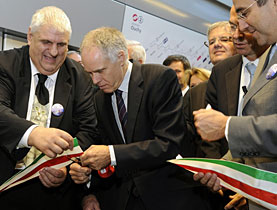
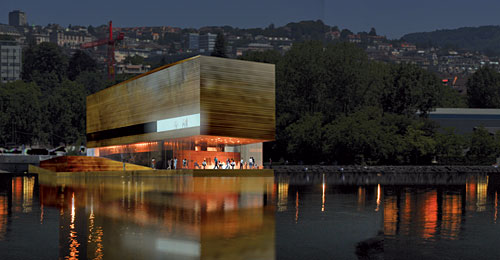
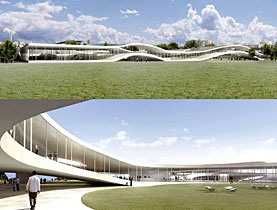
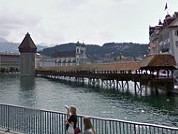
You can find an overview of ongoing debates with our journalists here. Please join us!
If you want to start a conversation about a topic raised in this article or want to report factual errors, email us at english@swissinfo.ch.